Join seven of the top DeLaval VMS producers from North America, Europe, Oceania and Latin America as they share and build knowledge around the DeLaval integrated robotic solution and best practices for robotic milking.
Archive for DeLaval
Join Dr. Bob James from Virginia Tech as he discusses how to successfully preparing and raise heifers in group housing environments. Dr James covers everything from the very start with dry cow nutrition for optimal body condition and health, through coordination of facilities and people, colostrum management, and much more. You won’t want to miss this insightful presentation by Dr James.
About The Presenter
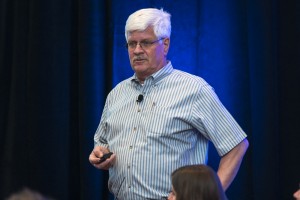 Dr. Bob James is the dairy extension project leader in the Dept. of Dairy Science with additional responsibilities in teaching and research. He received the University Academy of Teaching Excellence Award in 2010. Bob’s research has focused on management of growing calves and heifers, and a Jersey milk replacer was developed based upon Virginia Tech studies in which he participated. Most recently, his research has focused on sanitation and management of automated calf feeding systems. He is a founding member of the Dairy Calf and Heifer Association and served as the conference chairperson several times. Bob received his B. S. degree from the University of Delaware and M.S. and Ph.D. from Virginia Tech. After two years on the faculty at West Virginia University, he returned to Virginia Tech. Bob has made presentations and consulted with calf ranches, dairies and feed companies in more than 20 U.S. states, Canada, South America , Asia and Europe.
Dr. Bob James is the dairy extension project leader in the Dept. of Dairy Science with additional responsibilities in teaching and research. He received the University Academy of Teaching Excellence Award in 2010. Bob’s research has focused on management of growing calves and heifers, and a Jersey milk replacer was developed based upon Virginia Tech studies in which he participated. Most recently, his research has focused on sanitation and management of automated calf feeding systems. He is a founding member of the Dairy Calf and Heifer Association and served as the conference chairperson several times. Bob received his B. S. degree from the University of Delaware and M.S. and Ph.D. from Virginia Tech. After two years on the faculty at West Virginia University, he returned to Virginia Tech. Bob has made presentations and consulted with calf ranches, dairies and feed companies in more than 20 U.S. states, Canada, South America , Asia and Europe.
Join Dr. Nico Vreeburg from Vetvice Barn Design as he discusses Calf to CowSignals. Rearing calves into heifers is a major investment in terms of money and labour. Your dual aims are to turn your heifer into a strong, productive dairy cow and to use labour, housing and feed efficiently. If you achieve these aims, you’ll cut the costs of rearing per kilogram of milk. From calf to heifer covers the basics of successful rearing, shows you how to control risks and helps you to structure your work so that each calf automatically receives the best treatment. From calf to heifer is full of sensible tips on how to improve the rearing of calves and yearlings.
About the Presenter
Dr. Nico Vreeburg D.V.M. qualified in 1994 from Utrecht University, Netherlands. From 1994 to 2008 he worked as a private practitioner in veterinary practice De Overlaet, in Oss (NL). This practice focuses on four-legged farm animals and has dedicated itself to preventive herd health management and animal production support, with a team of 12 fulltime veterinarians. In 1998 Nico became a partner. During the following years he more and more dedicated his professional time to dairy farm support and joined the team of Vetvice, as trainer/consultant. Within Vetvice, he participated in the development of the CowSignals® concept and co-founded Vetvice Barn Design. On January 1, 2009, Nico left De Overlaet to join the Vetvice Group as a partner.
At this moment, Nico works works fulltime within the Vetvice Group as a trainer/consultant on barn design, dairy farm management and cow management. Vetvice Barn Design is a leading consultancy on designing dairy barns for cow wellness, labor efficiency and sustainable milk production. Vetvice Future Farming consults and trains dairy farm staff on save and efficient working procedures. Vetvice CowSignals Company trains dairymen and their advisors worldwide, in the areas of CowSignals and preventive management. Vetvice is active in over 30 countries with a team of 6 veterinarians, 2 agricultural engineers and 1 office manager.
At an ever increasing rate new equipment and information becomes available that dairy farmers can use to advance the way in which they manage their herds. The early adopters often go out on a limb and install systems on their farms that they hope will make their operations more profitable. Making better decisions or having information that gives advance notice of potential cow problems is critical to increased herd profit.
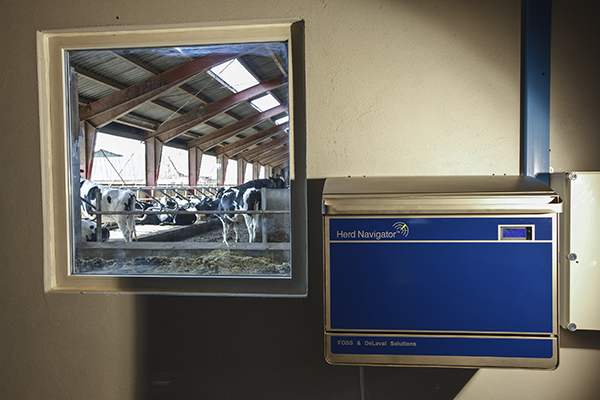
New on the Scene
Recently the Bullvine took the opportunity to get close-in on a new piece of equipment by visiting two reference farms. This equipment is called Herd Navigator™ (HN), a product of DeLaval/FOSS, and it has just completed verification in Canada using four Ontario dairy farms. It had been developed, field tested and implemented in Europe and at the present time it is being installed commercially in additional farms in Canada.
In brief what it does is take milk samples from selected cows on selected days and, based on the analysis of the milk, provides reports for herd managers to use. As one would expect, this requires equipment for sampling (a sampler and a sorter) and testing (on-farm mini lab), computer software and linkage to the herd management software used on the farm by the herd manager, the nutritionist or the veterinarian.
![VMSFullCow[1]](https://www.thebullvine.com/wp-content/uploads/2013/07/VMSFullCow1.png) Designed as the next tool for top herds
Designed as the next tool for top herds
The focus of HN is cows in robotic and parlour herds from calving to being pregnant again. (Read more: Robotic Milking: More than just automation it’s a new style of herd managment) Nancy Charlton DVM (Nutrition & Herd Management Specialist, DeLaval Canada) started her explanation and demonstration of HN by saying that “…. lets start with the basics. A herd must have an effective cow and heifer transition program. That is a well proven fact. HN is then a tool to make very good managers even better at their job.” That made me want to listen even harder to Dr Charlton as she very adeptly went through the various procedures and reports for HN.
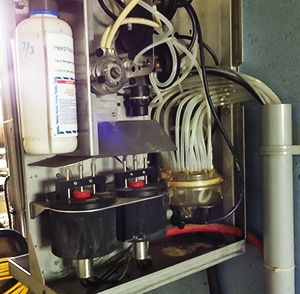 Multi-Purpose Tool
Multi-Purpose Tool
HN takes a milk sample at prescribed times and provides information on four areas important to herd management and profitability. Users of the HN™ system set up Standard Operating Procedures for all four areas, reproduction, mastitis, ketosis and urea level in the milk. When results for metabolic conditions exceed owner determined levels an alarm sounds (more correctly a report is generated) notifying the herdsman. Acting before a cow becomes a problem means less cost, more production and more profit.
It is a well known fact that managing REPRODUCTION takes detailed recording, considerable staff time, is a significant expense and reduces the average revenue per cow per year. For the time period starting 30 days before the voluntary waiting period until 55 days pregnant progesterone levels are monitored on critical days. Herd managers have access to detailed reports including: changes in progesterone levels; heats and the best time to breed; prolonged post partum anestrous; follicular cysts; luteal cysts; potential pregnancy; and early embryonic loss or abortion.
Life for herd managers would be much simpler if MASTITIS did not occur. But that would be a perfect world. HN uses the milk sample to measure the enzyme Lactate Dehydrogenase (LDH) which is released into the milk in an affected quarter during inflammation. Increasing LDH levels are highly correlated with the increased presence of somatic cells and the early stage of subclinical mastitis. The herd manager can choose to monitor the situation or to treat the cow immediately. At the very least the manager can look the cow up and make a visual or hands-on assessment. The creators of HN see using LDH as a more accurate way of determining the presence of mastitis. The frequency of testing cows for LDH is recommended as once per day for the first thirty days of lactation and after that it depends on the cow’s history and the herd’s standard operating practice.
The metabolic disease KETOSIS can be a thief of profit for cows by causing the loss of milk, lowering peak milk yield and cost of treatment. HN monitors the concentration of ketone bodies in a cow’ milks early in lactation. Measurements start on day four of lactation and continue until readings indicate there is a small chance of ketosis occurring. It is significant that HN reports on subclinical ketosis. Thus alerting the herd manager to take action before full blown ketosis occurs, either by altering the fresh cows diet or by treating the cow. Recent research indicates that subclinical ketosis is much more prevalent than dairymen are aware of. Potentially all herds are losing production due to subclinical ketosis and do not know it.
The final area that HN monitors is the UREA level in the milk a cow produces. This is similar to the MUN (milk urea nitrogen) service offered by CANWEST DHI but does not require that the owner wait until a milk recording test day. As yet this part of HN may not get as much use as the three previously mentioned areas. It is important to know if protein level in the diet are too high, just right or too low. Over feeding protein, the expensive part of the ration, costs money while under feeding means a cow’s potential is not being achieved and other feed ingredients are not being fully utilized. From what I heard when speaking with the two herd owners, that I visited, this area has yet to be ‘discovered’ for use by HN owners.
In summary these four areas give herd managers the opportunity to increase the profitability of their herds from just a milk sample.
Information Provided
At any time the herd manager can go to his computer and call up any reports. HN is definitely designed for larger herds that manage cows by groups. It provides information so that individual cows within the groups can have their current problem addressed. Only problem cows need to receive the attention of the herdsman.
Sytse Heeg of Heegstee Farms commented “I only need to give my attention to cows with problems. It would not be possible for my wife and me to manage without HN. We have 110 cows milking on two robots, all the young stock and our family to attend to every day and also the field work during the summer time. We do have assistance from my father part time and a summer student. I am so much more in control of my herd than I was before HN. And I am getting the results (profit) I wanted to get. Already 4 kgs more milk per cow per day with cows back in-calf as well as very low levels of mastitis and ketosis. In non-busy times it is even possible for us to take a vacation. But don’t forget I can remotely watch what is happening back home.”
At Elmwold Farms (Buchner Families), Jennifer is responsible for searching out the details from their 170 cow 3x herd that on the day I visited were producing, on average, 2.8 kgs (6.2 pounds) of fat & protein per day. When I visited Jennifer was on vacation so father (Chris) and brothers ( Greg and Derek) and cousin (Kevin), over a cold ice tea in the shade on a very hot summer day, described the many ways that their farm uses HN to better manage their herd. Chris Buchner provided the details. “Our herd is focused on efficient high fat plus protein yield. That is what we are paid for kgs of fat and protein sold off-farm. But it is more than that. We were having too many cows on holidays, aka in the dry pens, too much of the time. We calve the vast majority of our heifers before two years of age so we give a bit of a break in having them calve back but the herd average calving interval is 12.6 – 12.8 months. We are running a 24% pregnancy rate, we average 2.2 inseminations per pregnancy, our reproductive cull rate has gone from 28% down to 22%, the vast majority of our cows are pregnant by 120 days into lactation and using the urea numbers we have been able to lower our TMR from 18 to 17% protein. We purchased HN to improve our daily management of cows by focusing on cows outside the norm and to use our facilities to their maximum. We will soon build additional cow housing and will give more attention to our fresh cows with one pen for fresh heifers only as we already know that they get pushed out of the feed bunk by older cows in the fresh group. We looked at using pedometers but after seeing how much more HN could do we made the decision to purchase it. We are very happy we decided to go this route. Our family operation is growing and I am proud to say that the next generation is keen to be profitable dairy farmers.”
Cost Benefit
Top notch herd managers always want to know the cost benefit of any input, service or tool. The DeLaval website suggest that using HN a herd can increase revenue by $330 US$ (250 euros) per cow per year with annual material costs of 130 US$ per cow and an equipment cost of 500 US$ per cow for a two hundred cow herd. All of these numbers do not include the savings in feed for fewer cows (milking and dry) as well as the need for less housing facilities. Definitely it does require that a herd be of sufficient size to justify the initial cost of the equipment.
Another thing about the HN system is that it does all the work and testing thus allowing the herd manager to avoid the time to search out cows and do cow side testing. And, best of all, it does it before there is a problem not after the fact.
Muhieddine Labban (Automated Milking Systems Manager at DeLaval) sees the benefits in these ways “I like to call it return on investment with the results being: 1) accurate feeding – lower cost and waste; 2) lower cull rate; 3) lower use of antibiotics; 4) higher production per cow; 5) more effective use of the herd veterinarian; 6) higher pregnancy rate; 7) fewer inseminations lowering costs and semen used; 8) less herd manager frustration; 9) more family time for the dairy producer; and last but not least 10) the use of technology which will encourage the next generation to be dairy farmers”. An impressive list for every herd managers to consider.
The Bullvine Bottom Line
For breeders looking to manage better and increase their per cow profit, more attention to cows needing individual attention is an avenue to pursue. It definitely does pay to have cows reach peak production, avoid mastitis and get back in calf as quickly as possible. Knowing the facts to base decisions on is the way to go.
Get original “Bullvine” content sent straight to your email inbox for free.
As we research topics here at The Bullvine there is always an undercurrent of expectation. You never know the “when” or “where” of the next big surprise. Most often it is the “who” that makes our days special. As we began the background work on a series we have planned on robotic milking, we lined up several interviews (Read more – Robotic Milking: More than just automation it’s a new style of herd management). It became obvious that the go-to expert in this area would be Francisco Rodriguez, DVM, Holstein Breeder, Dairy Management Advisor Automatic Milking for DeLaval North America. Not only did we get tremendous insight from his experience in this new and growing field but, once again, we met a passionate cow man who is following a dream.
Five Farming Generations in Colombia
Francisco is the 5th generation of farmers in Colombia. His grandfather was a dairyman, cattleman and one of the pioneers in the genetic development of the Paso Fino horse. Francisco, like others in his family, inherited that love for raising livestock. He recounts how his own interest was ignited. “Our dairy was relatively small and my Dad needed a simultaneous job to keep up with his new family. Then he joined Semex Colombia as a sales representative, I remember going to the farm since the beginning of my life, but I got in love of Dairy cows when every month a catalogue or a magazine from Canada or USA arrived home. Instead of reading about superman or batman I started reading about Starbuck, Aerostar, Raider, Laurie Sheik, etc. etc. I developed a true love for cows and genetics becoming the foundation of my life together with my passion for business, as my mother has had clothing stores her entire life, allowing me to get the entrepreneur spirit at a very young age.
Single Minded Student
Because of his passion for dairy cows and horses, Francisco decided to go to Vet School after graduating from High School. He had tremendous academic success and was the best student in the faculty for four years in succession. After graduation, Francisco’s internship continued in the USA. “When I finished my Vet School I started an internship in one of the largest and most progressive western dairies in the USA. I learned from the management of an operation milking thousands of cows.”
Vet-Businessman in Colombia
After one year gaining experience, Francisco made the decision to move back to Colombia. His career now became more business focused as he adapted to the opportunities arising there. “When I arrived in Colombia two very interesting things happened. My Dad Francisco Rodriguez and my genetics mentor Juan Pablo Muriel started a partnership and became the exclusive Select Sires Dealership in Colombia!!” This was exciting explains Francisco because of the opportunity it gave him to understand both the genetics industry from both the Canadian and the US perspective. A new opportunity soon presented itself. “At the same time DeLaval hired me as a Sales Manager for The Andean and Caribbean countries, working with farmers from 1 – 30,000 milking cows, from Water Buffalo to High yielding Holsteins, and traveling all over the world learning the different dimensions in milk production. “
More Diversity. More Studies. Big Vision.
By now, it was clear that Francisco like generations before him could comfortably handle several different challenges at the same time. He clarifies. “Simultaneously with my work at DeLaval I continued developing my business skills graduating from Business School as a Strategic Marketing Management Specialist. I am a passionate individual, a dreamer, and I’ve been developing my life under friendship, excellence, focus and education, always starting small but thinking big, with a wide vision.
Achieving the Dream
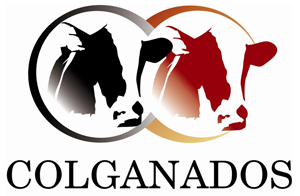 It isn`t surprising that someone whose family, studies and passion all revolve around cows would want to own them as well. Sure enough he confirms, “Since I was a kid I had a dream of my own registered Holstein herd, I liked my Dad’s commercial cows but that was not enough for me, I wanted purebreds, I wanted to become a real breeder.” With that end in mind he worked very hard to make it become reality. He outlines what it took. “Simultaneously with my position at DeLaval, in 2007 my parents and I founded Colganados RV.” Colganados is a dairy business based on added value strategies, particularly genetics. Francisco explains how they carried out this philosophy. “Colganados started with 15 cows, 30 heifers and 25 embryos selected from the best cow families available in the Colombian Market, most of them coming from well known Canadian and American Blood lines. Today Colganados RV milks approximately 200 registered Holsteins and develops one of the most aggressive Holstein breeding programs in Latin America.”
It isn`t surprising that someone whose family, studies and passion all revolve around cows would want to own them as well. Sure enough he confirms, “Since I was a kid I had a dream of my own registered Holstein herd, I liked my Dad’s commercial cows but that was not enough for me, I wanted purebreds, I wanted to become a real breeder.” With that end in mind he worked very hard to make it become reality. He outlines what it took. “Simultaneously with my position at DeLaval, in 2007 my parents and I founded Colganados RV.” Colganados is a dairy business based on added value strategies, particularly genetics. Francisco explains how they carried out this philosophy. “Colganados started with 15 cows, 30 heifers and 25 embryos selected from the best cow families available in the Colombian Market, most of them coming from well known Canadian and American Blood lines. Today Colganados RV milks approximately 200 registered Holsteins and develops one of the most aggressive Holstein breeding programs in Latin America.”
Open to A New Opportunity
For many, this would have marked the high point in a fast-rising career. For Francisco – dairyman- veterinarian- breeder- businessman it was just the beginning. In 2010 DeLaval offered to relocate Francisco to Madison, WI as the Dairy Management Advisor – Automatic Milking for North America. In describing what this felt like, he says, “I compare it to a pilot being asked to race in Formula 1.” Joking aside he admits that it was a tough decision to make. “I had a life built in Colombia and at the same time I had a unique opportunity in the heart of the dairy industry. My parents and employees gave me the strength and then I accepted the challenge and moved to Madison in 2011.”
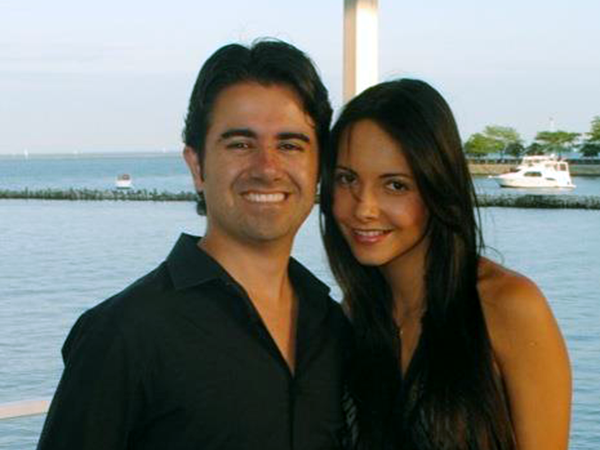
Francisco Rodriguez and his wife Sofia Cordabo
Love and Marriage
2011 marked special changes in Francisco’s life. He sums it up, “I got married to a wonderful woman, met wonderful people, made new friends and of course that put in the best place to continue reaching my dreams and accomplishing goals as a professional and as a breeder.”
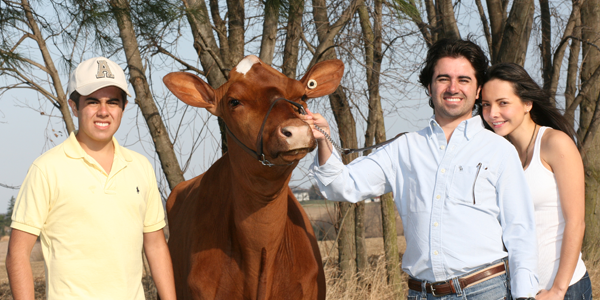
Seen here are (l-r) Juan David Rodriguez, Francisco Rodriguez and his wife Sofia Cordabo with KHW Regiment Apple A1-Red-ETN.
Enter Robotic Milking
An interesting facet of Francisco’s career opportunity would be that he would be working with Robotic Milking and high end technology. This has been tremendously positive he reports. “It has exposed me to the most progressive farmers and advisors around the world, especially in the North American Market. On average I visit two robotic herds every day, it is amazing to evaluate the quantity of miles and farms we see in a year!!!”
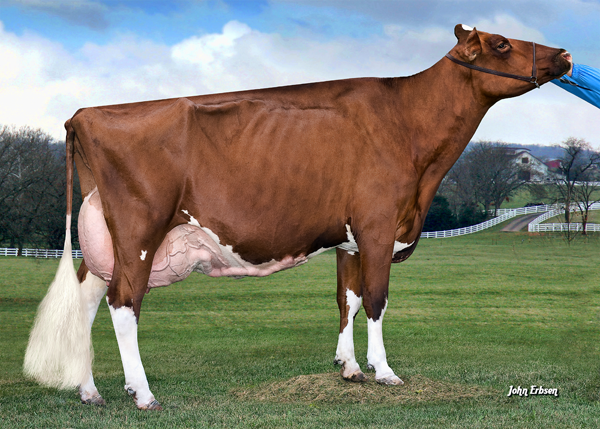
KHW REGIMENT APPLE-RED EX-95-2E-USA DOM 2*
ALL-AMERICAN JR.2-YR 2006
RES. ALL-CANADIAN R&W MATURE COW 2009
GRAND MADISON R&W 2011
RES.GRAND ROYAL R&W 2009
1ST MATURE COW MADISON R&W 2011
1ST JR.2-YR MADISON 2006
Building on a Firm Family Foundation
Even more amazing than the miles Francisco travels, are the achievements he makes on several fronts simultaneously. “In the beginning of 2012 I was missing having my own herd so together with my wife we started looking for the next level. For us that would mean being a dairy breeder in the North American Market with a global Scope.” Never one to dream big without doing his homework Francisco tells what they did next, all the while making it sound easy. “After visiting some of the most influential herds in the USA and Canada we met the foundation of our new project KHW Regiment Apple A1 RED-ETN a clone of the R & W world champion 2011 and million dollar APPLE.” This purchase is a fascinating story on its own. Another day perhaps.
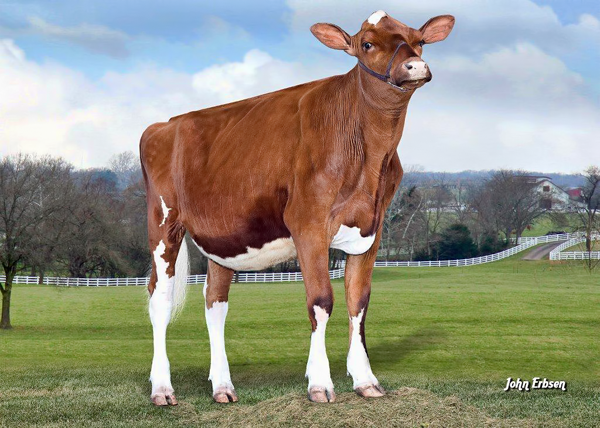
KHW REGIMENT APPLE 1-RED
The Bullvine Bottom Line
And so a passionate cattle man continues on several fronts to build his dream. In April 2012 Colganados began its history as a member of the USA Holstein Association. There have been many dimensions to the journey so far but Francisco recognizes that the diversity is what keeps him passionate “At the end of the day, the combination of all different kinds of knowledge, experiences and daily life bring a unique vision for every person.” Exactly!










